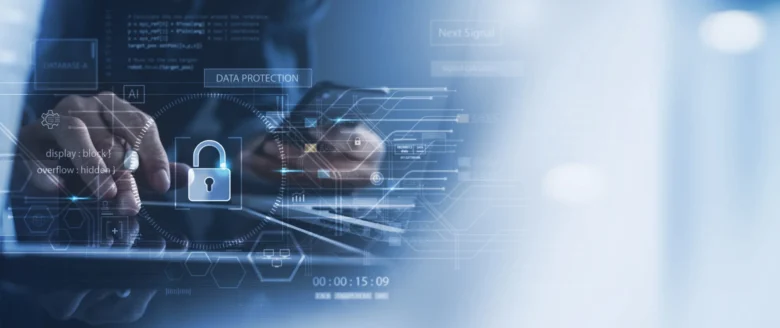Operational Technology (OT) refers to the hardware and software that detects or causes changes through direct monitoring and control of physical devices, processes, and events. Unlike traditional IT (Information Technology) systems, OT systems are often embedded into the critical infrastructure that supports industries like manufacturing, energy, transportation, and utilities. One of the core challenges in OT cybersecurity is the diverse range of equipment and technologies involved, many of which were not designed with modern cybersecurity considerations in mind. These systems tend to include a mix of legacy equipment and newer technologies, creating a convoluted landscape for cybersecurity professionals.
The interconnected nature of these devices increases the attack surface; an exploit in one system can propagate through to others, leading to potentially catastrophic consequences. Additionally, organizations often face a skills shortage. Cybersecurity professionals who understand both IT and OT environments are rare, resulting in gaps in knowledge that can leave vulnerabilities unaddressed. Thus, the unique mix of aging infrastructure, the integration of new technologies, and the absence of comprehensive training programs present critical hurdles that must be overcome in order to enhance OT cybersecurity resilience.
Risk vs. Reward: Balancing Security Measures and Operational Efficiency
In the quest for robust OT cybersecurity, organizations find themselves constantly grappling with the age-old dilemma of risk versus reward. On one hand, organizations must implement stringent security measures to protect sensitive processes and data from potential cyber threats. On the other, these measures can inadvertently impact operational efficiency—an outcome largely due to the reactive nature of traditional cybersecurity techniques that often prioritize controls over accessibility. For instance, increased monitoring and authorization protocols can slow production processes, causing friction among operators who require seamless access to systems.
The challenge lies in ensuring these defensive strategies enhance resilience without stifling operational capabilities. Companies should adopt a risk-management approach, assessing the unique value of assets and understanding the implications of potential threats. By carefully aligning security protocols with operational objectives, organizations can minimize conflict between safety and efficiency. Moreover, embracing common frameworks—such as the NIST Cybersecurity Framework—enables organizations to establish a baseline for security that aligns with their specific risk appetite.
Legacy Systems: The Old Guard’s Impact on Modern Security
Managing legacy systems in an OT environment poses a significant cybersecurity challenge. Often, these systems were designed decades ago, long before the prevalence of cyber threats was well understood. Many legacy systems run on outdated operating systems or use proprietary software with limited vendor support, creating substantial vulnerabilities. The complexity increases as these systems often must remain operational due to their critical roles in production processes; replacement or significant upgrades can be time-consuming and potentially devastating to manufacturing output or essential services.
The reliance on legacy components limits the ability to patch vulnerabilities promptly and hinders the implementation of automated, modern cybersecurity defenses. Organizations dealing with legacy systems must explore strategies that include imposing network segmentation, using firewalls that can monitor communication to and from older devices, and integrating risk mitigation controls like Virtual Private Networks (VPNs) or dedicated monitoring solutions. It’s also essential to classify legacy systems to understand their impact and prioritize upgrades or replacements based on this classification to ensure continued protection and reliability of OT environments.
Fortifying the Digital Fortress: Best Practices for Protecting OT Environments

Source: dragos.com
Intrusion Detection: Monitoring Techniques That Actually Work
In the realm of OT cybersecurity, implementing effective intrusion detection systems (IDS) is paramount to identifying and responding to potential threats. Traditional IT IDS solutions do not adequately cater to the unique behavior and protocols prevalent in OT environments. Hence, organizations need to adopt specific monitoring solutions tailored to their operational technologies. Network-based intrusion detection systems (NIDS) can monitor traffic to identify abnormal patterns that signal potential intrusions.
Organizations should look for solutions that integrate machine learning capabilities to enhance detection accuracy, enabling systems to adapt and learn from benign traffic behavior to differentiate it from malicious activities effectively. Combining NIDS with host-based intrusion detection systems (HIDS) can further elevate protection levels by providing insights into host system integrity. Preparing for incidents also demands continuous monitoring and automated alert systems that can notify personnel immediately upon detecting a potential breach—accelerating response times and potentially mitigating damage.
Access Control: Who Gets In? The Art of Privilege Management
Access control is the gatekeeper of OT security. Effective privilege management ensures that only individuals with the right permissions can access sensitive resources and systems. A principle known as the Principle of Least Privilege (PoLP) is one of the most essential frameworks for ensuring that users and systems are granted only the minimal level of access necessary for their roles. Organizations must implement multi-factor authentication (MFA) to provide an extra layer of security against unauthorized access. Ensuring that software and devices regularly ask for identity verification makes it exceedingly difficult for attackers to gain direct access.
Moreover, continuous monitoring of user activities can help identify any anomalous behaviors and critical access patterns, feeding back into the access control strategy to adjust permissions as necessary. Regular audits and reviews of access controls contribute to a more secure environment. This allows organizations to pinpoint outdated permissions, identify potential insider threats, and ensure compliance with industry standards and regulations. Ultimately, vigilantly managing access can significantly reduce risks posed by human error or insider threats.
Segmentation Strategies: The Power of Isolation in Cyber Defense
Network segmentation serves as a powerful strategy for mitigating risks associated with OT cybersecurity by isolating different parts of an organization’s network. By segmenting networks, organizations can create barriers that limit communication between devices, reducing the attack surface and containing potential breaches to isolated segments before they escalate. For OT environments, implementing a demilitarized zone (DMZ) can enable safe communication between business networks and operation technologies; crucial processes can be kept within a separate segment that is more tightly controlled.
Further employing the Zero Trust model—whereby every access request is scrutinized regardless of its origin—ensures that organizations can limit exposure to potential attackers even within the network. Adopting micro-segmentation within critical OT functions can also minimize the spread of attacks. By creating individual segments for different industrial control systems, organizations can ensure that if a breach does occur in one segment, it does not compromise the integrity of others. Through regular monitoring of these segments and the enforcement of strict access controls, security can be maintained proactively.
Crisis Management: Responding to OT Cyber Incidents Effectively
A Plan in Action: Developing a Robust Incident Response Framework
Incident response in OT environments must be methodically developed and regularly updated to adapt to emerging threats. A well-structured incident response framework acts as a playbook for managing cyber incidents effectively. It demands clearly defined roles, responsibilities, and procedures for preparation, detection, and response phases. Having a multidisciplinary incident response team that includes IT professionals, OT engineers, legal advisors, and communication experts ensures a holistic approach to incident management. Each member’s role should be clearly articulated during the planning phase to ensure a coordinated response when an incident occurs. Moreover, organizations should invest in continuous training and simulation exercises to test the robustness of their incident response frameworks. Real-world scenarios should be practiced to evaluate team performance under pressure, identify gaps in response strategies, and enable teams to refine their attack playbooks. Additionally, regular reviews of incident response plans ensure alignment with the latest cybersecurity trends and emerging threats, enhancing resilience and preparedness.
Lessons from the Frontlines: Case Studies of OT Breaches and their Fallout

Source: securitymagazine.com
Analyzing case studies of OT cybersecurity breaches provides critical insights into vulnerabilities and response effectiveness. Notable incidents, such as the Stuxnet attack that targeted Iran’s nuclear program, highlight the profound consequences of cybersecurity weaknesses in OT environments. Stuxnet demonstrated the potential for cyber attacks to not only disrupt services but also cause physical damage to infrastructure.
Various learned lessons emerge from such incidents, including the imperative for robust monitoring systems, the need for frequent risk assessments, and the necessity of fostering a culture of cybersecurity awareness among employees. Organizations must also appreciate the importance of sharing threat intelligence among industry peers to better anticipate and mitigate risks. Post-incident analysis emphasizes the need for transparency. Documenting breaches and reporting them appropriately can help organizations learn what went wrong and how they can improve their defenses. Benchmarks can be established based on previous events, guiding future readiness and response strategies.
Post-Incident Recovery: Rebuilding Trust and System Integrity
After an incident has been contained, the focus shifts to recovery. Organizations must restore operations while ensuring that vulnerabilities have been addressed to prevent similar occurrences in the future. It involves conducting comprehensive forensic analyses to understand the full scope and impact of the breach. Rebuilding trust—both internally with employees and externally with stakeholders—is a critical component of recovery.
Transparent communication about the incident and the steps taken to resolve the situation plays a vital role in maintaining relationships and instilling confidence. Organizations can use this period to reinforce training across the workforce, enhancing their understanding of cybersecurity best practices and incident reporting protocols. Creating and promoting a culture of incident reporting becomes essential for improving resilience. This requires developing internal channels for employees to voice concerns, ask questions, or report irregularities without fear of punitive measures. By welcoming feedback and fostering open conversations about cyber threats, organizations can enhance their operational integrity and agility against future attacks.
Looking Ahead: The Future of OT Cybersecurity in a Connected World

Source: nozominetworks.com
The Role of AI and Automation in Enhancing Security Measures
Artificial Intelligence (AI) and automation are poised to transform OT cybersecurity significantly. These technologies offer the prospect of real-time threat detection and rapid response capabilities that far exceed human capacity. By leveraging machine learning algorithms, organizations can analyze vast intelligence data to identify anomalies and possible intrusion attempts in the operational environment. The integration of AI-driven systems can help automate routine tasks such as log monitoring, patch management, and threat intelligence gathering, allowing cybersecurity teams to focus on strategic initiatives rather than day-to-day operations. Such automation can also lead to the development of enhanced predictive analytics, enabling organizations to anticipate and thwart potential attacks before they materialize.
As AI technology continues to evolve, organizations will be presented with new opportunities to strengthen security strategies and to optimize operational efficiencies concurrently. However, embracing AI must be coupled with a cautious approach to ensure ethical practices around data usage and the avoidance of over-reliance on technology to manage complex OT environments.
Building a Cybersecurity Culture: Training the Workforce of Tomorrow

Source: linkedin.com
Effective OT cybersecurity is only as strong as the workforce that supports it. Nurturing a cybersecurity culture within organizations equips employees with the knowledge and awareness necessary to safeguard assets and respond proactively to threats. Training should encompass not only technical skills but also foster an understanding of the specific vulnerabilities associated with OT environments. Comprehensive training programs can include practical workshops, interactive simulations, and frequent security updates that relate directly to employees’ daily responsibilities. Encouraging a mindset of continuous learning and engagement ensures that cybersecurity becomes an integral part of an employee’s role, rather than a series of compliance checkboxes to tick off.
Moreover, organizations should focus on leadership buy-in, as top-down commitment to cybersecurity initiatives promotes stronger adherence across all levels. Compelling stories about real-world incidents demonstrating the consequences of negligence can raise awareness and catalyze behavior changes among employees, transitioning into a workforce that is vigilant and proactive regarding cybersecurity.
Regulatory Compliance: Navigating the Evolving Landscape of Standards
As cybersecurity threats evolve, so too do the regulatory requirements governing operational technology environments. Organizations must remain vigilant and adaptable to a landscape that includes standards set forth by governing bodies, as well as industry-specific guidelines. Compliance with frameworks such as the NIST Cybersecurity Framework, ISO/IEC 27001, and the Critical Infrastructure Protection (CIP) standards ensures organizations can demonstrate their commitment to safeguarding operational environments.
Navigating this evolving compliance landscape can be complex; organizations must perform regular audits to ensure adherence while also adapting to new regulations as they arise. Establishing dedicated compliance teams can facilitate ongoing monitoring and ensure alignment with best practices across OT systems. Navigating regulatory obligations successfully requires a forward-thinking approach, where compliance is viewed not just as a necessity but as a vehicle for achieving operational excellence and fostering customer trust. Aligning compliance strategies with broader business goals promotes a culture of security as an enabler rather than a hindrance.




